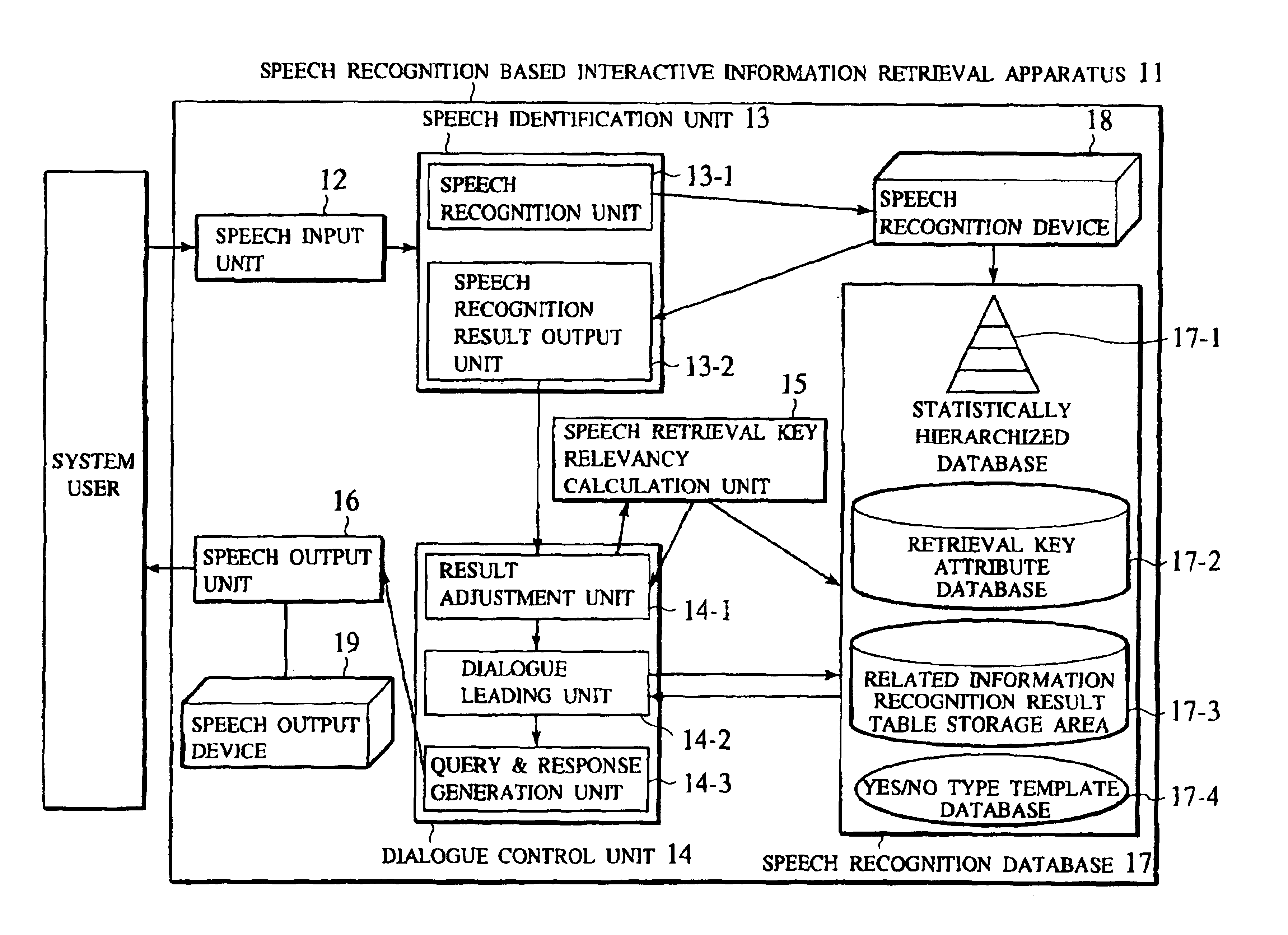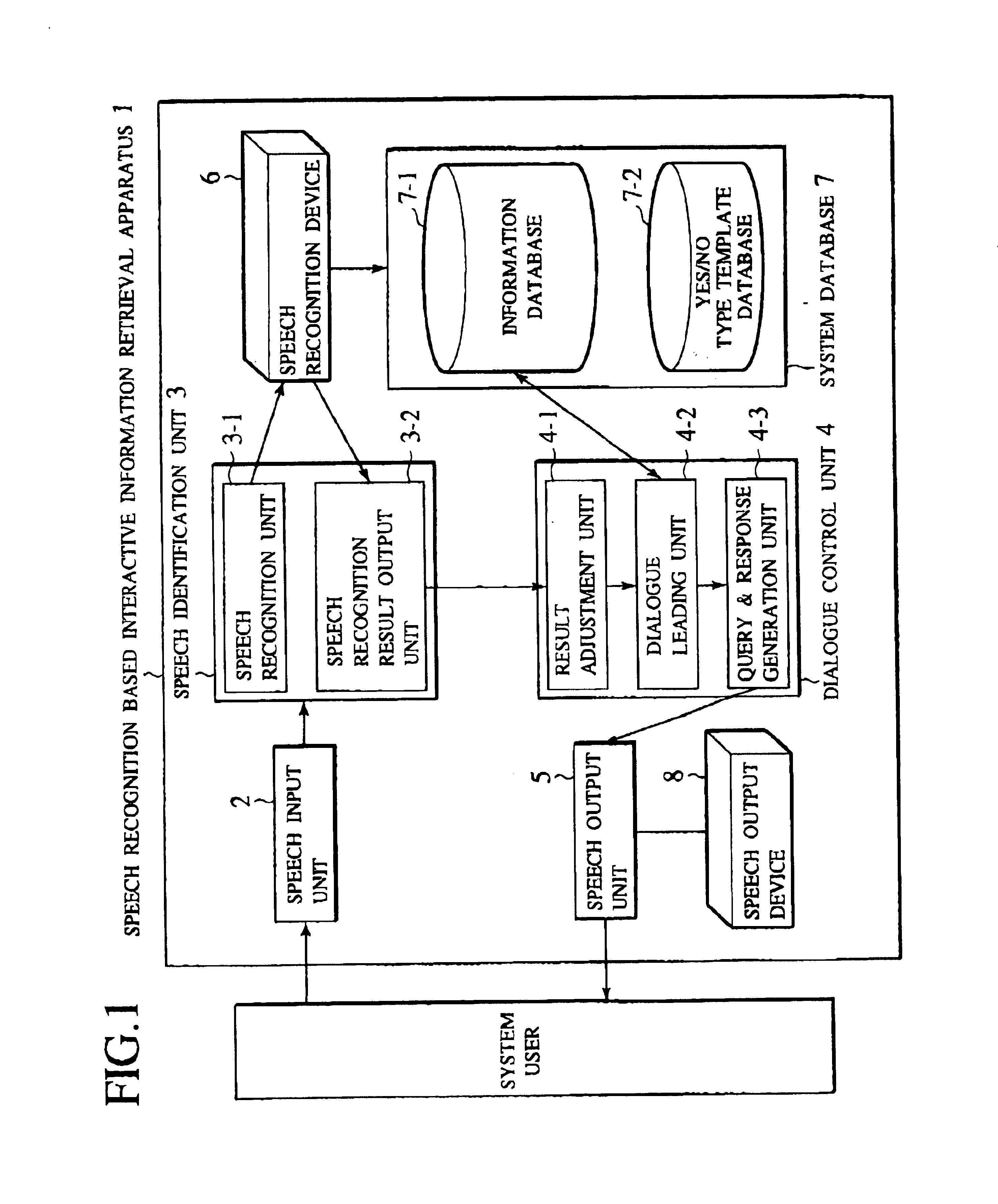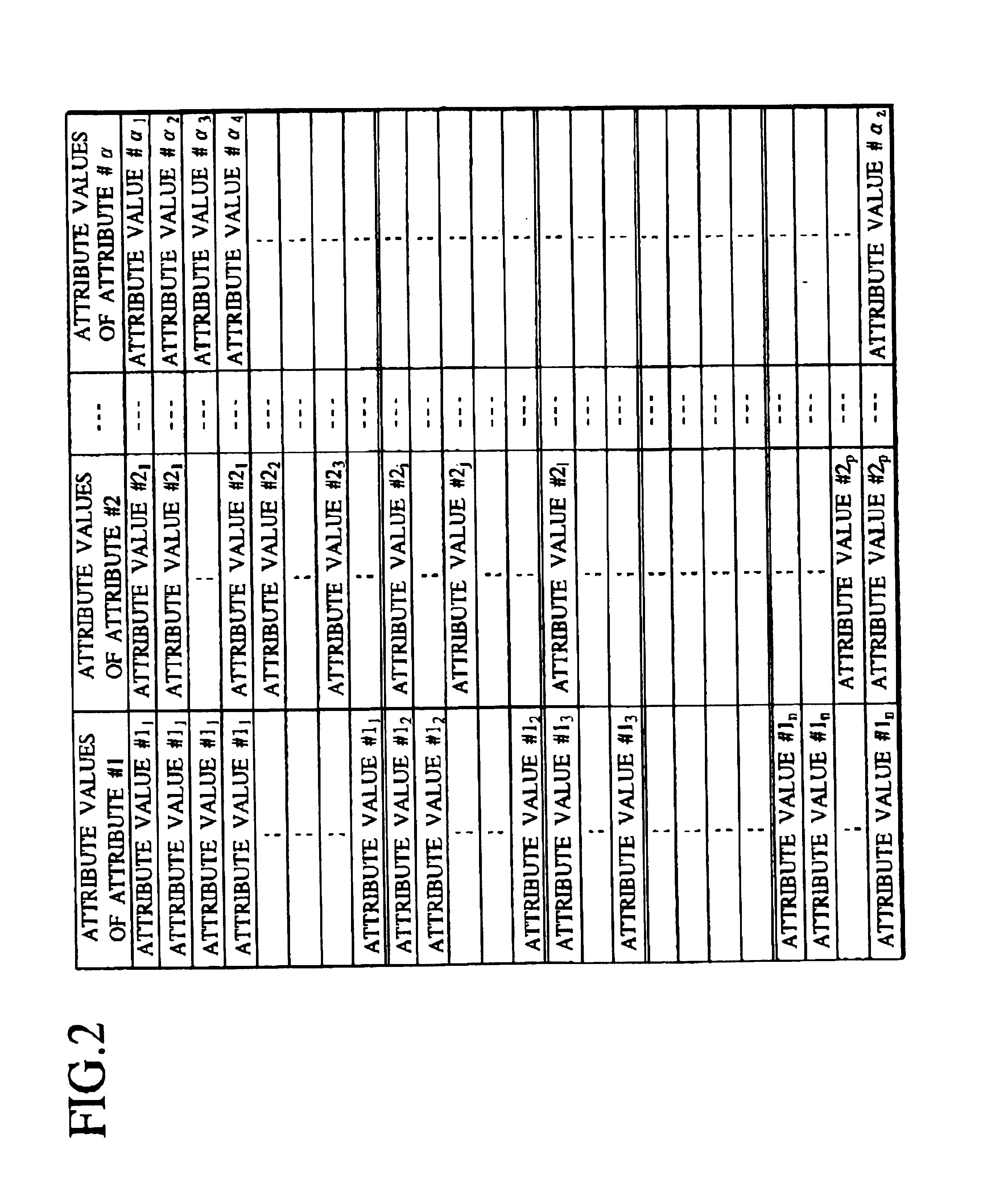Speech recognition based on interactive information retrieval scheme using dialogue control to reduce user stress
a speech recognition and interactive technology, applied in speech recognition, speech analysis, data processing applications, etc., can solve the problems of reducing the recognition accuracy due to an increase in the recognition target word, limiting the number of recognition, and requiring a considerable amount of tim
- Summary
- Abstract
- Description
- Claims
- Application Information
AI Technical Summary
Benefits of technology
Problems solved by technology
Method used
Image
Examples
first embodiment
[0121]Referring now to FIG. 1 to FIG. 8, the first embodiment directed to the above described first scheme of the present invention will be described in detail.
[0122]FIG. 1 shows an exemplary configuration of a speech recognition based interactive information retrieval apparatus (which will also be referred to as interactive information retrieval apparatus for short) in the first embodiment of the present invention. This interactive information retrieval apparatus 1 comprises a speech input unit 2, a speech identification unit 3, a dialogue control unit 4, and a speech output unit 5. The speech identification unit 3 further comprises a speech recognition unit 3-1 and a speech recognition result output unit 3-2. The dialogue control unit 4 further comprises a result adjustment unit 4-1, a dialogue leading unit 4-2 and a query and response generation unit 4-3. The speech identification unit 3 utilizes a speech recognition device 6, and the speech output unit 5 utilizes a speech output...
second embodiment
[0163]Referring now to FIG. 9 to FIG. 22, the second embodiment directed to the above described second scheme or the present invention will be described in detail.
[0164]FIG. 9 shows an exemplary configuration of a speech recognition based interactive information retrieval apparatus in the second embodiment of the present invention. This interactive information retrieval apparatus 11 comprises a speech input unit 12, a speech identification unit 13, a dialogue control unit 14, a speech retrieval key relevancy calculation unit 15, and a speech output unit 16. The speech identification unit 3 further comprises a speech recognition unit 13-1 and a speech recognition result output unit 13-2. The dialogue control unit 14 further comprises a result adjustment unit 14-1, a dialogue leading unit 14-2, and a query and response generation unit 14-3.
[0165]The speech identification unit 13 utilizes a speech recognition device 18, and the speech output unit 16 utilizes a speech output device 19. ...
third embodiment
[0235]Referring now to FIG. 23 to FIG. 31, the third embodiment directed to the above described third scheme of the present invention will be described in detail.
[0236]FIG. 23 shows an exemplary configuration of a speech recognition based interactive information retrieval apparatus in the third embodiment of the present invention. This interactive information retrieval apparatus comprises a central processing unit (CPU) 110, a memory device 120, a database 130 and a user device 140. Here, it is also possible to connecte the CPU 110 and the user device 140 through a network.
[0237]The CPU 110 is a major component of this interactive information retrieval apparatus, which comprises an input request unit 111, a speech recognition unit 112, a recognition result adjustment unit 113 and a user interface (speech interface) 114. Note that these elements 111 to 114 can be constructed by utilizing hardware and software of the general purpose computer in practice. The memory device 120 is a wor...
PUM
 Login to View More
Login to View More Abstract
Description
Claims
Application Information
 Login to View More
Login to View More - R&D
- Intellectual Property
- Life Sciences
- Materials
- Tech Scout
- Unparalleled Data Quality
- Higher Quality Content
- 60% Fewer Hallucinations
Browse by: Latest US Patents, China's latest patents, Technical Efficacy Thesaurus, Application Domain, Technology Topic, Popular Technical Reports.
© 2025 PatSnap. All rights reserved.Legal|Privacy policy|Modern Slavery Act Transparency Statement|Sitemap|About US| Contact US: help@patsnap.com



